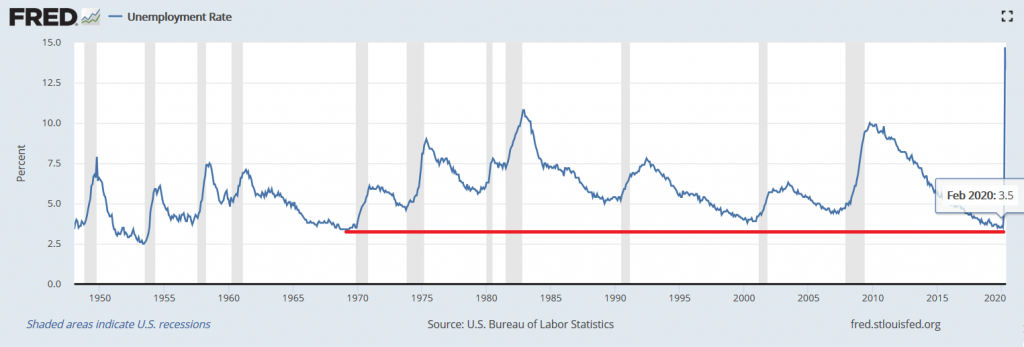Taps Coogan – June 9th, 2020
Enjoy The Sounding Line? Click here to subscribe for free.
Enjoy The Sounding Line? Click here to subscribe.
Despite the better than expected May jobs report, which showed a 2.5 million person drop in unemployment versus expectations for a 7.5 million person increase, the road back to anything resembling normal unemployment is going to be long and hard. The following chart, from Bill McBride at Calculated Risk, shows why:
May Employment Report: 2,500,000 Jobs Added, 13.3% Unemployment Rate https://t.co/sYZ0uXqOHu pic.twitter.com/qDVrOHsPUl
— Bill McBride (@calculatedrisk) June 5, 2020
Since World War II, the quickest return to pre-recession employment levels occurred in 1980 when the number of jobs dipped by roughly 1% and took about 10 months to recover. During most Post-War recessions, it took about two years to recover job losses, which ranged from about 2% to about 5%. The deep recession of 1981 took roughly four years to repair. The Global Financial Crisis took over six years.
It’s impossible to know how long this job loss cycle will take to recover, but the chart above strongly suggests it’s a matter of many years. Considering that the pre-crisis unemployment rate was the lowest level since the 1960s, and that the US population is getting progressively older and growing more slowly, one has to wonder if it’s a question of decades.

Another factor to consider is that the BLS has acknowledged a “misclassification error” in the jobs numbers for the last three months whereby workers who claim that they aren’t working, but expect to be recalled, where mistakenly classified as employed. They should have been classified as unemployed. While that doesn’t change the fact that the May jobs report was much better than expected, it does mean that the job losses since February have been significantly worse than reflected in the charts above.
Here, visualized, is the official US unemployment rate & the rate adjusted for absentee misclassification, which BLS has acknowledged & quantified.
— Ernie Tedeschi (@ernietedeschi) June 6, 2020
It shows that a) the corrected unemployment level is higher, & b) the error shrank in May, so that the corrected rate fell by more. pic.twitter.com/BboMStxGBh
Would you like to be notified when we publish a new article on The Sounding Line? Click here to subscribe for free.
Would you like to be notified when we publish a new article on The Sounding Line? Click here to subscribe for free.

